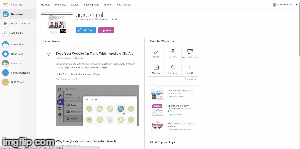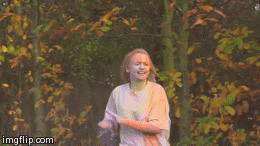Research and Planning Stage:
- Facebook - we used Facebook, the online social media site, as a means of communication between the group. Each member of the group had existing Facebook accounts, and we each had the app on our smartphones. This meant that we were able to use the messenger feature of the app to message each other in a group chat, and receive the messages instantly to our phones, similar to texting, as long as we had access to WiFi or 3G internet. We also made a group on Facebook where we could post any pictures/videos/questions relevant to our project and discuss them in the comment sections.

I have compiled a list of pros and cons below, and a chart which demonstrates how the pros of using Facebook outweigh the cons.
- iPads - we found the iPads available to us in school very useful as they were easily portable so we could use them in different rooms whilst we were having our group meetings, it also meant that we didn't all have to crowd around a computer in our meetings which could have lead to distractions.
- The Internet (Web 2.0) - we used the internet thoroughly throughout the duration of our project; in this stage of the project we mainly used the internet for watching other artist's music videos, this helped to inspire us with ideas for our own video. We also used the internet to look at artist's websites, this was incredibly important for us as we used them to learn the conventions of musician's official sites, which in turn led us to design our own.
We used websites such as YouTube to watch a wide range of other music videos; Spotify and Soundlcoud to listen to other dance tracks, Tumblr and Pinterest to find inspiring art and images, and other artist's websites.
- Adobe Premier Pro - One of the programmes that we used during our research and planning stage was Adobe Premier Pro. We used this software to create our steal-o-matic which is the video shown below. A steal-o-matic is almost like a video mood-board; it is a collection of different video clips and stills that we reference, and that have influenced us during the project. We also put the song we are using on top of the steal-o-matic which was useful as it helped us to visualise what the video may look like. We've all used the programme before, in our AS year of media so we all found it quite quick and simple to use.

Premier Pro steal-o-matic project open across 2 screens.
We also used PremierPro to create our animatic which was a really simple, linear timeline made up of the different shots which we want to use in the music video. We used really basic sketches that we used on our story board, and put them in order to the track so we could see how long each shot would last. On Premier Pro we can add text to the image so we would give a brief description of each shot as it appeared on screen. The video below is our group's animatic which was created in the early stages of the project.
- Spotify - I found Spotify to be a really useful platform in the research stages of the project; this was mainly due to the wide access to different artists of all different genres. A really useful feature on Spotify is the ' Related Artists' page which made it really simple to find tracks similar to the ones we really liked, even if we had never heard of the artist before. This also gave us a good reference point to look at other artists of the same genre which we could refer to throughout the duration of the project.
- The Internet (Web 2.0) - we used the internet thoroughly throughout the duration of our project; in this stage of the project we mainly used the internet for watching other artist's music videos, this helped to inspire us with ideas for our own video. We also used the internet to look at artist's websites, this was incredibly important for us as we used them to learn the conventions of musician's official sites, which in turn led us to design our own.
We used websites such as YouTube to watch a wide range of other music videos; Spotify and Soundlcoud to listen to other dance tracks, Tumblr and Pinterest to find inspiring art and images, and other artist's websites.
- Adobe Premier Pro - One of the programmes that we used during our research and planning stage was Adobe Premier Pro. We used this software to create our steal-o-matic which is the video shown below. A steal-o-matic is almost like a video mood-board; it is a collection of different video clips and stills that we reference, and that have influenced us during the project. We also put the song we are using on top of the steal-o-matic which was useful as it helped us to visualise what the video may look like. We've all used the programme before, in our AS year of media so we all found it quite quick and simple to use.
 |
| Premier Pro steal-o-matic project open across 2 screens. |
We also used PremierPro to create our animatic which was a really simple, linear timeline made up of the different shots which we want to use in the music video. We used really basic sketches that we used on our story board, and put them in order to the track so we could see how long each shot would last. On Premier Pro we can add text to the image so we would give a brief description of each shot as it appeared on screen. The video below is our group's animatic which was created in the early stages of the project.
- Spotify - I found Spotify to be a really useful platform in the research stages of the project; this was mainly due to the wide access to different artists of all different genres. A really useful feature on Spotify is the ' Related Artists' page which made it really simple to find tracks similar to the ones we really liked, even if we had never heard of the artist before. This also gave us a good reference point to look at other artists of the same genre which we could refer to throughout the duration of the project.
Construction Stage:
In the video below we explore the pros and cons of the three different cameras we used during the production of our music video; the Canon 5D Mark ii, the Canon Legria, and the GoPro.
In this video, Ellie and I show how we used the lighting technology that we have access to in the studio for the purposes of our music video. The main technologies we used was the Leapfrog lighting desk upstairs in the studio and the lighting rigs that had to be operated manually from the studio floor.
Construction Stage:
- Adobe Premier Pro - we used this programme to edit our music video; we also used it to edit other videos that feature on our website such as our "behind the scenes on our music video" video.

 |
| Both screens of Premier Pro on our final edit of the music video. |
The picture below is a screen capture of the timeline of our final edit of the music. The timeline is really easy to work on as it enables us to move different clips from the video about, and change their order, as well as their length. We had various different sequences on this project, but the sequence below 'Sequence 17' was our final one.
- We used our smartphones to communicate with each other off-set, this was useful as it meant we could contact one another if one of us was running a bit late, or other similar situations.
- We used Wix to construct our website, I found this website easy to use as it did not require knowledge of coding to design it.

- We exhibited our music video on YouTube and shared it on social media sites such as Facebook to reach a wider audience
 |
 |
| We also shared the music video via Twitter. |
Evaluation Stage:
The new media technology that I used throughout my evaluation was Blogger, the blogging site which I used to post the four seperate answers to my evaluation. Blogger has various different features and functions which make it particularly useful for this project.
One of the most useful points of using Blogger was that gifs could be used in blog posts to help illustrate a point. Gifs are also really useful in making a blog post more visually exciting and interesting. It was particularly useful when trying to help demonstrate different types of editing in the video. The gif below is one of many gifs that I made for my blog.
 |
Overall, I feel like Blogger was an invaluable new media technology in the evaluation stage of this project; and its positive points definitely outweigh its negatives.
I also used other sites and webtools to help me create my evaluation points; these are demonstrated below in the following prezi:
Over the duration of this project we used a wide range of media technologies from the research stage to the final posts of our evaluations. I think that we took full advantage of the technologies that were available to us, and we used them effectively throughout each stage. Although almost each technology had its negative points, this project would have been completely different without them. If we were to have done this project ten years ago then our results would have been entirely different as many of the technologies we used had not yet been made. I think that we are extremely lucky to have so many different technologies available to us at our fingerprints.










No comments:
Post a Comment